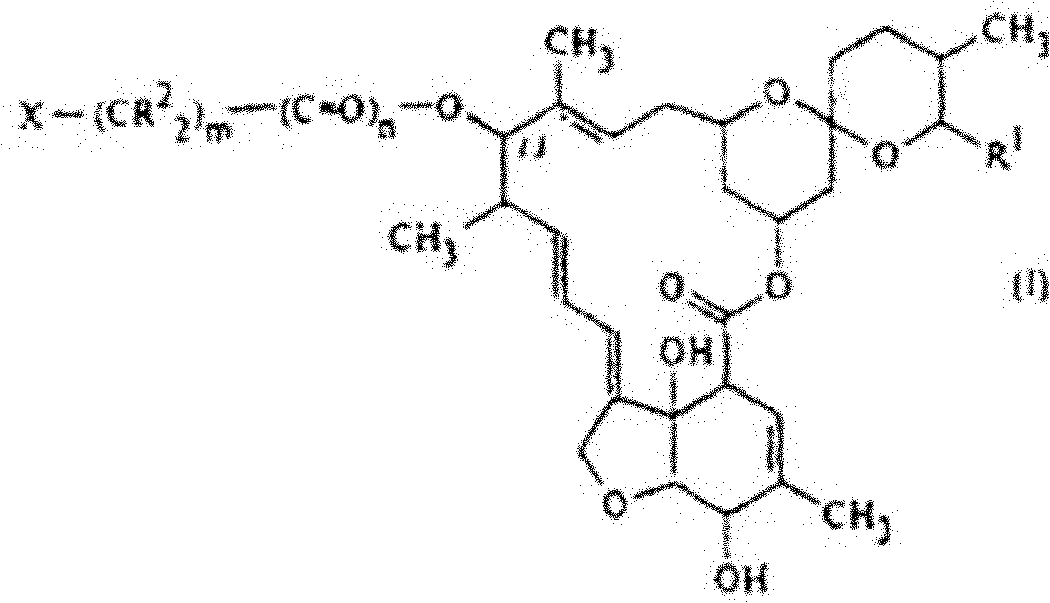Efficient environment-friendly pesticide composition containing biopesticide
An insecticidal composition, pesticide insecticidal technology, applied in the direction of insecticides, biocides, animal repellents, etc., can solve the problems of limited adult insect control effect, no ovicidal effect, and low dosage, so as to delay pests Effects of drug resistance, reduction of pesticide residues, and reduction of environmental pollution
- Summary
- Abstract
- Description
- Claims
- Application Information
AI Technical Summary
Problems solved by technology
Method used
Image
Examples
Embodiment approach
[0015] In one of the technical solutions of the present invention, the insecticidal composition is an emulsion in water, and the weight percentage of the components is:
[0016] Active ingredient A 0.1~50%
[0017] Active ingredient B 0.1~75%
[0018] Emulsifier 3~30%
[0019] Solvent 5~15%
[0020] Antimicrobial agent 0.1~1%
[0021] Stabilizer 2~15%
[0022] Antifreeze 2~5%
[0023] Defoamer 0.1~8%
[0024] Thickener 0.2~2%
[0025] water balance
[0026] The specific production steps of the emulsion in water are as follows: first, the original medicine A and B, solvent, emulsifier, and cosolvent are added together to dissolve into a uniform oil phase; Pesticide auxiliaries are mixed together to form a uniform water phase; while stirring at high speed in the reactor, add the oil phase to the water phase, slowly add water until the phase inversion point is reached, turn on the shearer for high-speed shearing, and add the remaining water , cut for about half an hour t...
example 1
[0082] (1) Test drug
[0083] 85% lepimectin original drug, 96% chlorantraniliprole original drug, all of which are provided by Qingdao Hailier Pharmaceutical Group R&D Center.
[0084] Dissolve the original drug with acetone first, and mix the appropriate amount of the two original drugs into 5 different ratios according to the results of the preliminary experiment, and then use acetone to dilute each treatment into 5 series of concentration gradients for use.
[0085] (2) Test target
[0086] Rice planthopper. The rice brown planthopper was used as the test object. Insect species were taken from the paddy fields of Dalu Village, Zhaodian Town, Gaoqing County, and artificially reared for multiple generations in the insect culture room. The healthy and consistent 4th to 5th instar nymphs were selected for future use.
[0087] (3) Test method
[0088] The spot method recommended by NY / T 1154.1-2006 was used for determination. Clean the micro-dropper with solvent and adjust...
example 2
[0106] (1) Experimental test agent
[0107] 85% lepimectin and 98% bromotraniliprole, all of which are provided by Qingdao Hailier Pharmaceutical Group.
[0108] (2) Test target
[0109] Beet armyworm raised for generations indoors, indoor conditions: temperature (26±2) o C. The relative humidity is 70%±5%, and the photoperiod is 16 / 8h (L / D).
[0110] Experimental method is the same as activity determination example 1
[0111] (3) Toxicity test results and analysis:
[0112] Table 2 Indoor test results of lepimectin and bromotraniliprole against beet armyworm
[0113]
[0114]
[0115] As can be seen from the table, in the mixing of different proportions, its co-toxicity coefficients are all greater than 120, showing a certain synergistic effect, wherein the synergistic effect of lepimectin: bromotraniliprole is the most obvious at 3:12, The co-toxicity coefficient was 134.21. The test results showed that both lepimectin and bromotraniliprole had higher activity ag...
PUM
 Login to View More
Login to View More Abstract
Description
Claims
Application Information
 Login to View More
Login to View More - R&D
- Intellectual Property
- Life Sciences
- Materials
- Tech Scout
- Unparalleled Data Quality
- Higher Quality Content
- 60% Fewer Hallucinations
Browse by: Latest US Patents, China's latest patents, Technical Efficacy Thesaurus, Application Domain, Technology Topic, Popular Technical Reports.
© 2025 PatSnap. All rights reserved.Legal|Privacy policy|Modern Slavery Act Transparency Statement|Sitemap|About US| Contact US: help@patsnap.com



